Welcome to the flavorful world of charcuterie, where the art of crafting delectable cured meats takes center stage. Whether you're a seasoned pro or just embarking on this savory journey, one thing is certain: the right supplies can make all the difference. In this guide, we'll unlock the secrets to sourcing the essential charcuterie business supplies and equipment that sets the stage for your charcuterie business's success. From the precision of meat slicers to the alchemy of curing chambers and the humble but vital cutting board, we'll dive deep into the tools that transform your culinary dreams into delectable reality. So, sharpen your knives, and let's explore the essential equipment every charcuterie artisan needs.
Table of Contents [CLICK HERE TO OPEN]
- Crafting Culinary Artistry with the Right Supplies
- Essential Equipment for Charcuterie Businesses
- Packaging and Presentation: Making Your Charcuterie Stand Out
- Elevating Flavors: Specialty Ingredients for Charcuterie
- Charcuterie Business Supplies Essentials: Beyond the Kitchen
- Learning and Resources: Building Your Expertise
- Sourcing Supplies in Bulk: Smart Business Strategies
- Finding Local Sources: Supporting Your Community
- Staying Up-to-Date: Trends and Innovations
- Wrapping It Up
- Frequently Asked Questions
Crafting Culinary Artistry with the Right Supplies
In the gastronomic world, the delicate balance of flavors, textures, and appearances is an art form, and charcuterie is the dazzling ballet of cured meats, cheeses, and accoutrements. But, as any artist knows, having the right tools is essential for creating a masterpiece.
Picture this: you're setting up your charcuterie display, ready to dazzle your patrons with an array of delicious offerings. To achieve this, you need precision tools, quality ingredients, and packaging that's as alluring as your creations.
The secret to charcuterie success lies in understanding the crucial role of supplies in this flavorful journey. This guide is your backstage pass to the world of charcuterie business supplies. We're here to unveil the significance of every item that turns raw ingredients into culinary spectacles.
You see, it's not just about meats and cheeses. It's about the slicers that sculpt them, the boards that showcase them, the chambers that nurture them, and the packaging that piques curiosity. Whether you're a charcuterie connoisseur or just stepping onto the scene, our journey will uncover the essentials you need for success.
Throughout this guide, we'll delve into a captivating array of supplies, from high-tech slicers that glide through prosciutto with precision to the humble wooden boards that host the stars of your charcuterie show. Our expedition will explore the art of sourcing quality ingredients, the craft of arranging a captivating charcuterie board, and the business side of procurement.
Buckle up, charcuterie artisan, because your culinary adventure begins with the right supplies. We're about to embark on a delightful journey that combines the art of presentation, the science of preservation, and the thrill of sourcing options. It's time to elevate your charcuterie business to new heights.
Essential Equipment for Charcuterie Businesses
In the world of charcuterie, precision is paramount. The difference between a good charcuterie board and an exceptional one often boils down to the tools of the trade. Let's delve into the essentials that every charcuterie business should have in their culinary arsenal.
Meat Slicers: Precision in Every Slice
Why are meat slicers crucial? Imagine trying to slice delicate prosciutto paper-thin with just a kitchen knife. It's a daunting task. Meat slicers are the answer. They provide the precision and consistency needed to ensure your meats are sliced to perfection, whether it's prosciutto, salami, or chorizo.
Features to Consider: When selecting a meat slicer, look for one with adjustable thickness settings. This allows you to achieve the perfect thickness for each type of meat. Consider the blade material; stainless steel is not only durable but also easy to clean. Don't forget safety features, like blade guards and non-slip grips.
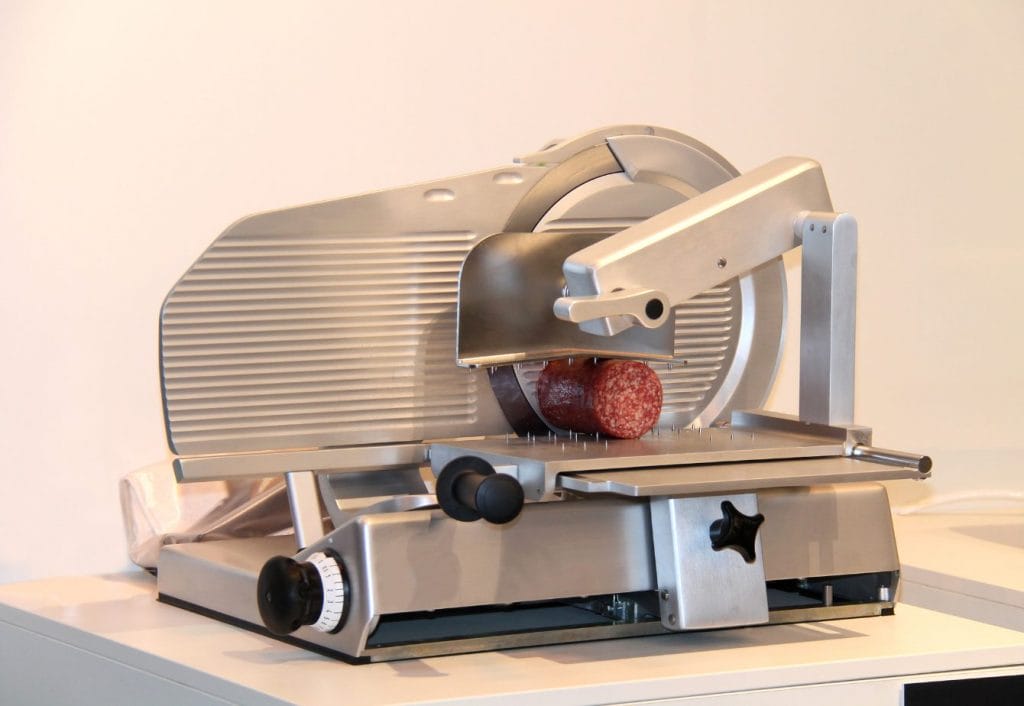
Curing Chambers: The Heart of Preservation
Curing chambers are the unsung heroes of charcuterie. These chambers create the ideal environment for aging and curing your meats, enhancing their flavors and textures. There are different types available, from small, at-home chambers to large-scale commercial ones.
Curing Chamber Types: Small, at-home chambers are perfect for artisanal charcutiers, while commercial chambers cater to larger operations. Your choice will depend on your business's scale. These chambers maintain consistent humidity and temperature, ensuring your meats age gracefully and emerge with delectable character.
Cutting Boards: Where the Art Unfolds
Quality cutting boards are the stage for your charcuterie masterpiece. They're where the art of arrangement unfolds. But a cutting board isn't just about aesthetics; it's about functionality and hygiene.
Selecting the Right One: Look for wooden or bamboo cutting boards; they're not only visually appealing but also gentle on knife blades. Ensure the board is large enough to accommodate your creations. If you're looking for longevity, consider end-grain cutting boards. They are durable and resistant to knife marks.
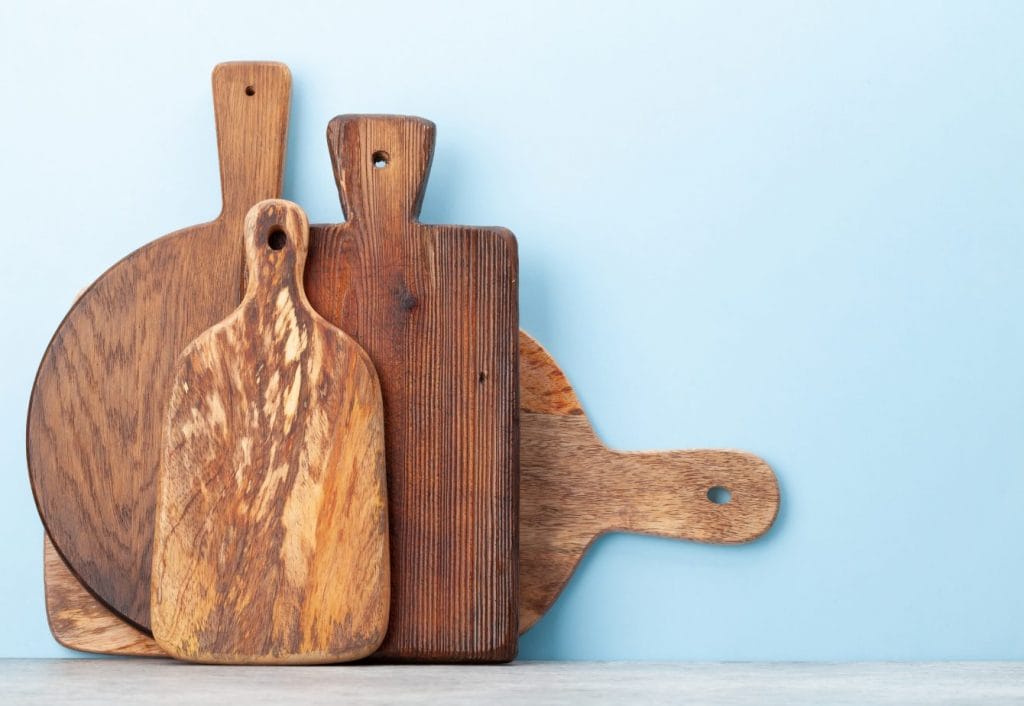
In the world of charcuterie, these tools are your trusted companions. Meat slicers ensure precision, curing chambers transform flavors, and cutting boards are your canvas. As you embark on your charcuterie journey, remember that your creations will only be as good as the tools you use. Invest in quality, and your charcuterie will shine.
Packaging and Presentation: Making Your Charcuterie Stand Out

Charcuterie Boards: The Canvas of Culinary Art
Charcuterie boards are the canvas upon which you paint your culinary masterpiece. They're not just any boards; they're the stage for your delectable charcuterie performance. The role they play is both functional and artistic. These boards provide an inviting, rustic backdrop for your meats, cheeses, and accompaniments. Their tactile warmth adds character to your presentation, setting the mood for a delightful tasting experience.
Selecting the Right Board
Now, you might be wondering, “How do I choose the perfect charcuterie board?” It's not just about aesthetics; it's also about functionality. Consider the size, shape, and material. If you're serving an intimate gathering, a small wooden board might suffice. For larger events, a long, rectangular board provides ample space. Slate, marble, or even vintage cutting boards can all make intriguing choices.
Deli Packaging: More Than Meets the Eye
Next up is deli packaging, a seemingly humble yet indispensable part of your charcuterie presentation. It's about more than just wrapping your offerings; it's a key ingredient in the taste of anticipation. Attractive and functional packaging not only keeps your charcuterie fresh but also adds to the overall appeal. Think of it as the prologue to the grand charcuterie adventure your patrons are about to embark on.
Exploring Packaging Options
Deli packaging options are as diverse as your charcuterie creations. From transparent cellophane to kraft paper, you have an array of choices. Each option adds its own charm to your presentation. Transparent wraps showcase your charcuterie like jewelry in a glass case, while brown kraft paper offers a rustic touch.
Presentation Platters and Tools: Shaping the Experience
Finally, let's talk about presentation platters and tools. These are the unsung heroes of charcuterie artistry. Platters not only serve as a stage but also as a crucial platform to elevate your charcuterie. Their size and shape can accentuate your design, while tools like cheese knives, spreaders, and tongs ensure ease of access for your patrons.
Enhancing the Appeal
These tools are like your artist's brushes, letting you finely detail your charcuterie presentation. Cheese knives with different shapes and sizes allow you to offer a variety of cheese textures, from creamy to crumbly. Tongs and spreaders make it simple for guests to interact with your offerings.
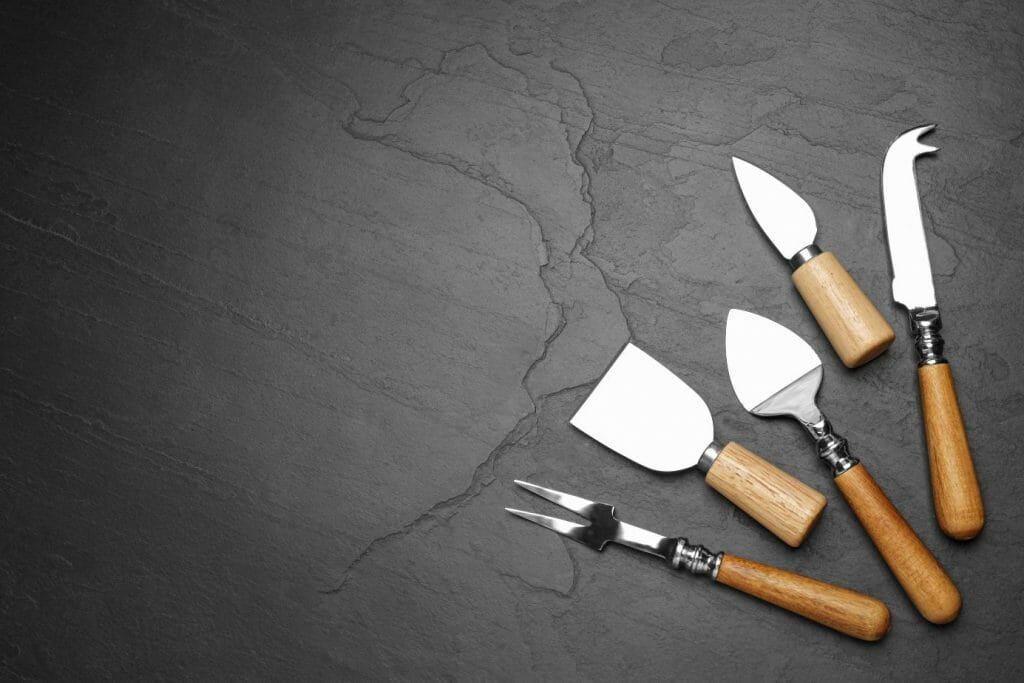
The key here is to combine aesthetics and functionality. Your presentation should be visually enticing and practical. Your charcuterie presentation isn't just about taste; it's about engaging all the senses. By choosing the right boards, packaging, and tools, you're crafting an experience that will leave a lasting impression on your patrons.
Elevating Flavors: Specialty Ingredients for Charcuterie
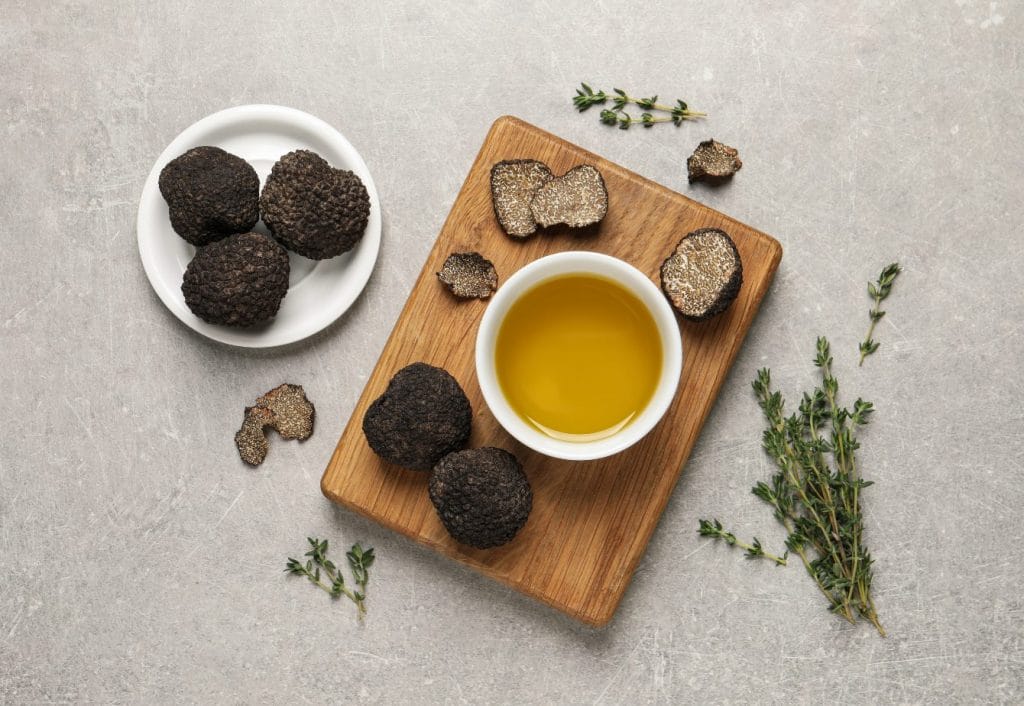
Truffle Oil and Gourmet Condiments: Elixir of Flavor
Imagine if you could bottle the essence of luxury and drizzle it over your charcuterie. That's what truffle oil does. This aromatic elixir, derived from truffle mushrooms, is like a secret handshake among gourmets. Just a few drops can elevate your meats and cheeses to a new level of sophistication.
Enhancing with Truffle Oil and Gourmet Condiments
Truffle oil, with its earthy, almost otherworldly aroma, harmonizes beautifully with creamy cheeses and delicate cured meats. It's your shortcut to gourmet status. Drizzle it on brie and watch it transform into a delicacy fit for a king. Or pair it with a velvety prosciutto to create a sensory experience that will be remembered.
When sourcing truffle oil and gourmet condiments, quality is paramount. The real deal can be pricey, but a little goes a long way. Opt for trusted brands to ensure you're getting genuine truffle goodness.
Artisan Cheeses and Spices: Mastering the Art of Flavor
Artisan cheeses, on the other hand, are the charcuterie world's crown jewels. These handcrafted cheeses boast unique flavors and textures, turning your board into a culinary adventure. From the velvety creaminess of triple cream Brie to the bold complexity of an aged cheddar, each cheese tells a story.
Selecting and Pairing Artisan Cheeses and Spices
The key to selecting artisan cheeses is to explore. Visit local dairies or specialty cheese shops to discover hidden gems. For spices, consider classics like cracked black pepper, smoked paprika, and fennel seeds. These can complement the flavor profiles of your meats and cheeses. Experiment with pairings, like the peppery notes of a cured salami contrasting with the sweetness of fig jam or honey.
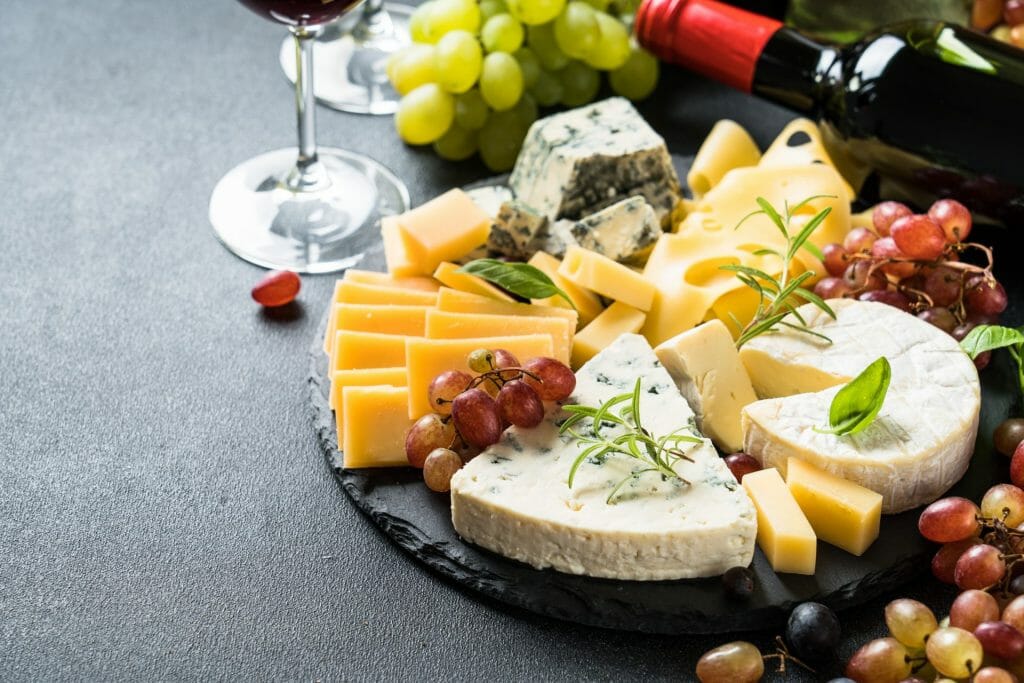
The magic of charcuterie lies in the interplay of flavors. It's an opportunity to showcase the synergy between truffle oil's decadence and the earthy charm of artisan cheeses. By investing in quality ingredients and thoughtfully pairing them, you'll embark on a flavor journey that's as delightful to create as it is to savor.
Charcuterie Business Supplies Essentials: Beyond the Kitchen

Commercial Refrigerators and Food Storage: Where Freshness Meets Profit
In the charcuterie world, freshness is everything. It's the secret to delectable creations that keep patrons coming back for more. But how do you maintain that impeccable freshness, ensuring your meats and cheeses stay in prime condition? The answer lies in proper storage.
The Importance of Proper Storage
Whether you're operating a bustling deli or a cozy corner charcuterie, you'll need a reliable storage solution. Commercial refrigerators are a charcuterie chef's best friend. They keep your ingredients at the ideal temperature, ensuring they remain safe to eat and bursting with flavor.
Insights into Commercial Refrigerators
These workhorses of the kitchen are available in various sizes to fit your business's needs. From compact under-counter units to sprawling walk-ins, there's a refrigerator for every space. Quality matters; investing in a dependable commercial fridge is like safeguarding your culinary investments.
Food Safety Supplies and Compliance: The Shield of Trust
Food safety isn't a mere formality; it's the shield that protects your customers and your business. The charcuterie world thrives on trust, and that trust begins with safe practices.
The Significance of Food Safety
Maintaining proper hygiene and food safety standards ensures the wellbeing of your patrons. It also safeguards your reputation and business. Essential supplies, like food-grade containers, temperature monitoring equipment, and cleaning materials, are non-negotiable. To navigate the food safety maze, familiarize yourself with local regulations and compliance requirements.
Licensing and Insurance: The Legal Backbone
Running a charcuterie business isn't just about crafting mouthwatering delights; it's also about navigating the legal landscape. Licensing and insurance are the legal backbone of your operation.
Addressing Legal Aspects
Before you slice your first salami, ensure you have the necessary licenses to operate legally. The specific requirements may vary by location, so research your local regulations. Additionally, don't underestimate the importance of business insurance. It's your safety net in case of unexpected events, providing peace of mind and financial protection.
In the world of charcuterie, success goes beyond flavor. It extends to proper storage, food safety, and legal compliance. By investing in commercial refrigeration, adhering to food safety practices, and obtaining the right licenses and insurance, you're building a foundation that allows your culinary creations to shine. This business side ensures the artistry in your kitchen is supported by solid operations.
Learning and Resources: Building Your Expertise
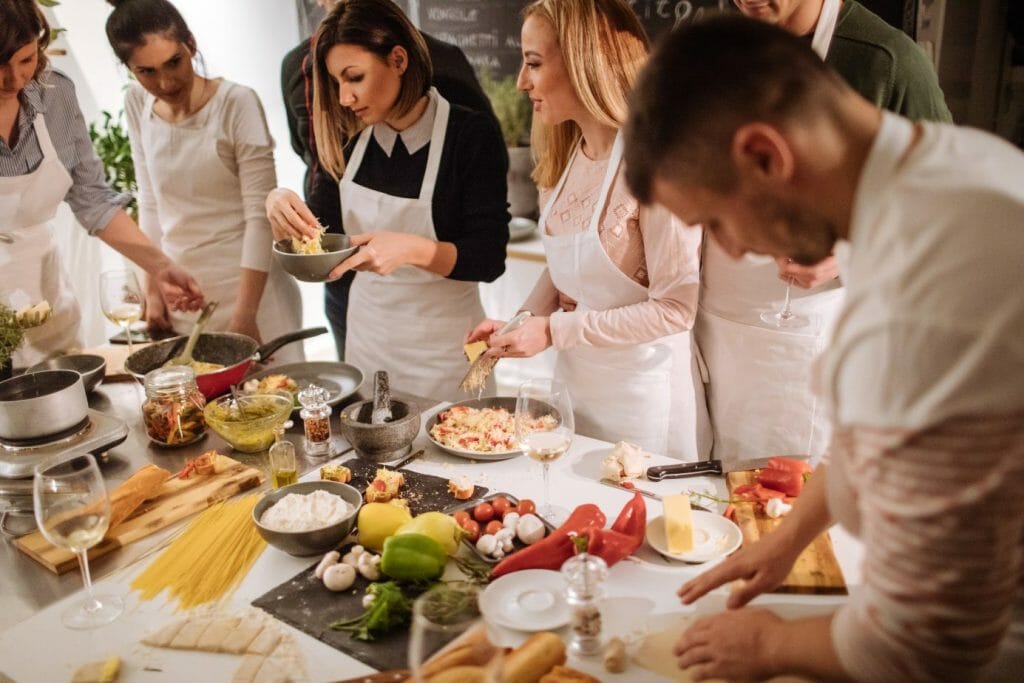
Charcuterie Courses and Classes: The Path to Perfection
Charcuterie is a culinary art, and like any art, it can be mastered through dedicated learning. Formal training, such as charcuterie courses and classes, can be your key to perfection.
Benefits of Formal Training
Enrolling in charcuterie courses offers the opportunity to learn from seasoned professionals. It's a chance to explore the intricacies of curing, aging, and flavor balancing. You'll gain hands-on experience, mastering techniques that can take your creations to the next level.
Insights into Available Courses and Classes
Numerous culinary schools and institutions offer charcuterie-specific programs. These courses vary in length and depth of content, so choose one that aligns with your goals. You can find options ranging from short workshops to comprehensive diploma programs.
Recipe Books and Online Tutorials: The Library of Inspiration
The journey to charcuterie mastery doesn't stop with formal training. It extends to resources that serve as inspiration and reference. Recipe books and online tutorials are your library of expertise.
Resources for Learning and Improving Skills
Recipe books authored by renowned charcutiers can provide insights into traditional and innovative recipes. Online tutorials, often hosted by experts or chefs, offer step-by-step guidance. They can be a treasure trove of tips and tricks to refine your skills.
Meat Curing Guides: Navigating the Curing Process
One of the core skills in charcuterie is meat curing. The nuances of curing can be intricate, and that's where meat curing guides come into play.
The Value of Meat Curing Guides
These guides demystify the art of curing. They provide detailed instructions on everything from selecting the right cuts to applying the perfect balance of salt, sugar, and spices. For beginners, they're invaluable.
Recommendations for Beginners
For those new to meat curing, start with reputable guides like “Charcuterie” by Michael Ruhlman and Brian Polcyn, which is often considered a charcuterie bible. It's filled with practical advice, recipes, and insights.
Building expertise in charcuterie is an ongoing journey. While formal training equips you with fundamental skills, recipe books, online tutorials, and meat curing guides are your constant companions on the path to perfection. Together, they provide the knowledge and inspiration needed to continuously refine your charcuterie craft.
Sourcing Supplies in Bulk: Smart Business Strategies

Bulk Sausage Casings and Wholesale Meat Suppliers: Economical Charcuterie
Running a successful charcuterie business is not just about crafting culinary delights; it's also about smart business strategies. Sourcing supplies in bulk is a cost-effective approach that can significantly impact your bottom line.
The Cost-Effective Approach of Bulk Supplies
When you buy in bulk, you often get a better price per unit. This cost efficiency can make a substantial difference in your overall expenses. In the world of charcuterie, where meats are a primary component, sourcing casings and meat in bulk can lead to considerable savings.
Tips on Sourcing Casings and Meat in Bulk
To source sausage casings in bulk, consider reaching out to suppliers or butchers who can offer you wholesale options. Be sure to research and vet potential meat suppliers thoroughly. Quality is paramount, so ensure that your chosen supplier meets your standards.
Charcuterie Ingredient Suppliers and Wholesale Cheese Distributors: Quality Matters
The heart of every charcuterie creation is in its ingredients. Quality is the essence of flavor, and that's why charcuterie ingredient suppliers and wholesale cheese distributors are so vital.
The Importance of Ingredient Suppliers
Your business's reputation hinges on the quality of your ingredients. Whether it's spices, truffle oil, or artisanal cheeses, the right suppliers can ensure your charcuterie stands out. Don't compromise on the quality of your sources; it's an investment in your brand.
Insights into Finding Quality Ingredient Sources
To find quality ingredient suppliers, attend food trade shows, connect with local farmers and artisans, and explore specialty food markets. Building strong relationships with these suppliers can lead to reliable, high-quality sources for your charcuterie ingredients.
Sourcing supplies in bulk isn't just a financial strategy; it's a means of ensuring the consistent quality of your charcuterie. By finding reliable sources for sausage casings, meat, spices, and cheeses, you're not just saving money; you're investing in the heart and soul of your business – the flavor that keeps customers coming back for more.
Finding Local Sources: Supporting Your Community

Charcuterie Supply Stores Near Me: The Convenience of Local
Charcuterie, at its core, is about creating connections. While the world of global commerce offers a myriad of options, there's a unique charm in sourcing your supplies locally.
The Convenience of Local Suppliers
Local charcuterie supply stores offer convenience that's hard to beat. No need to wait for shipping or worry about long delivery times. You can often walk in, handpick your supplies, and even strike up conversations with knowledgeable staff.
Tips on Finding Nearby Stores
To discover charcuterie supply stores near you, explore online directories, ask fellow charcutiers for recommendations, and check out local food forums. Remember, supporting these local businesses not only benefits you but also strengthens your community.
Artisan Suppliers in Your Location and Local Farmers' Markets: A Taste of Home
Your community is a treasure trove of culinary delights waiting to be discovered. Artisanal and local ingredients not only offer a taste of home but also create a unique flavor profile for your charcuterie.
The Value of Local and Artisanal Ingredients
Artisan suppliers and local farmers' markets provide a direct link to fresh, seasonal, and often unique ingredients. By incorporating these local treasures into your charcuterie, you're not just making a delicious choice; you're contributing to the vibrancy of your community.
Recommendations for Sourcing Locally
Look out for local farmers' markets, artisan cheese makers, and small-batch producers. Joining community-supported agriculture (CSA) programs can also be an excellent way to access fresh, local ingredients. Don't hesitate to establish relationships with these local suppliers. Your charcuterie can become a delicious showcase of your community's flavors.
In the world of charcuterie, it's not just about what you create but also how you create it. Supporting local suppliers and sourcing your ingredients within your community not only adds a distinctive flavor to your charcuterie but also nourishes the bonds that make your neighborhood a delightful place to live and work.

Staying Up-to-Date: Trends and Innovations

Sustainable Packaging and Organic Ingredients: Charcuterie Goes Green
In today's world, the quest for sustainability and organic living extends to every aspect of our lives, including the culinary domain. Charcuterie supplies are no exception.
The Sustainability Trend in Charcuterie Supplies
Sustainable packaging has gained traction in the charcuterie world. Customers are increasingly conscious of the environmental impact of their food choices. This trend has led to a demand for eco-friendly packaging options that reduce waste and support environmental responsibility.
The Demand for Organic Ingredients
Simultaneously, there's a rising demand for organic ingredients in charcuterie. Organic meats, spices, and condiments offer a wholesome alternative for those seeking a natural, chemical-free charcuterie experience.
Tech Innovations in Equipment: The Future of Charcuterie
The art of charcuterie is timeless, but technology is now playing a role in shaping the future of equipment used in the trade.
How Technology is Influencing Charcuterie Equipment
Tech innovations are making their mark on equipment, enhancing precision and efficiency. Modern meat slicers are equipped with advanced features for more precise cutting, while curing chambers come with digital controls to maintain the perfect curing conditions. These innovations save time and effort while ensuring consistent quality.
Innovations to Look Out For
Keep an eye on tech innovations like smart temperature monitoring and cutting-edge slicing mechanisms. They can streamline your production process and elevate the quality of your charcuterie.
The charcuterie world is evolving, aligning with the sustainability movement and embracing tech innovations. By staying informed about these trends and adopting them into your business, you're not only keeping up with the times but also providing your customers with a charcuterie experience that's in harmony with their values and expectations.
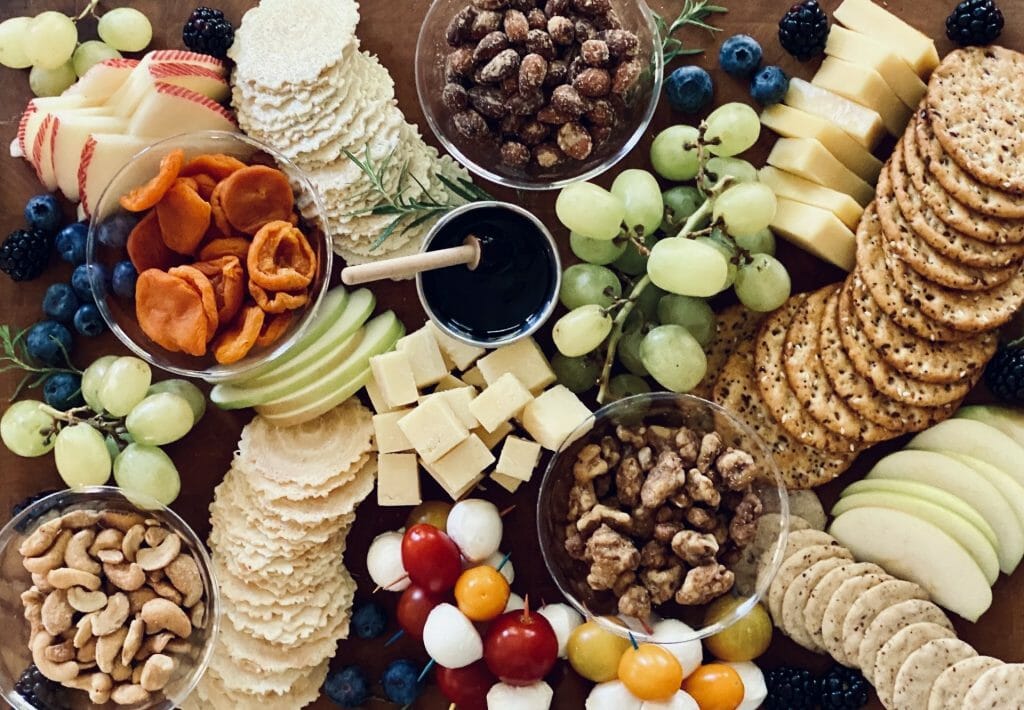
Wrapping It Up
Sourcing the right charcuterie supplies is the secret ingredient to culinary success. It's not just about crafting delicious flavors; it's about the tools, ingredients, and strategies that turn your culinary creations into unforgettable experiences.
As you embark on your charcuterie journey, remember that your business needs are unique. Consider the scope of your operations, your budget, and your commitment to sustainability and quality. The right supplies should align with your vision and the experience you want to offer to your customers.
If you have any more questions, need further guidance, or want to explore the world of charcuterie supplies in more depth, don't hesitate to reach out. Your culinary adventure is just beginning, and we're here to support your every step.
Bon appétit, and may your charcuterie creations be nothing short of extraordinary!
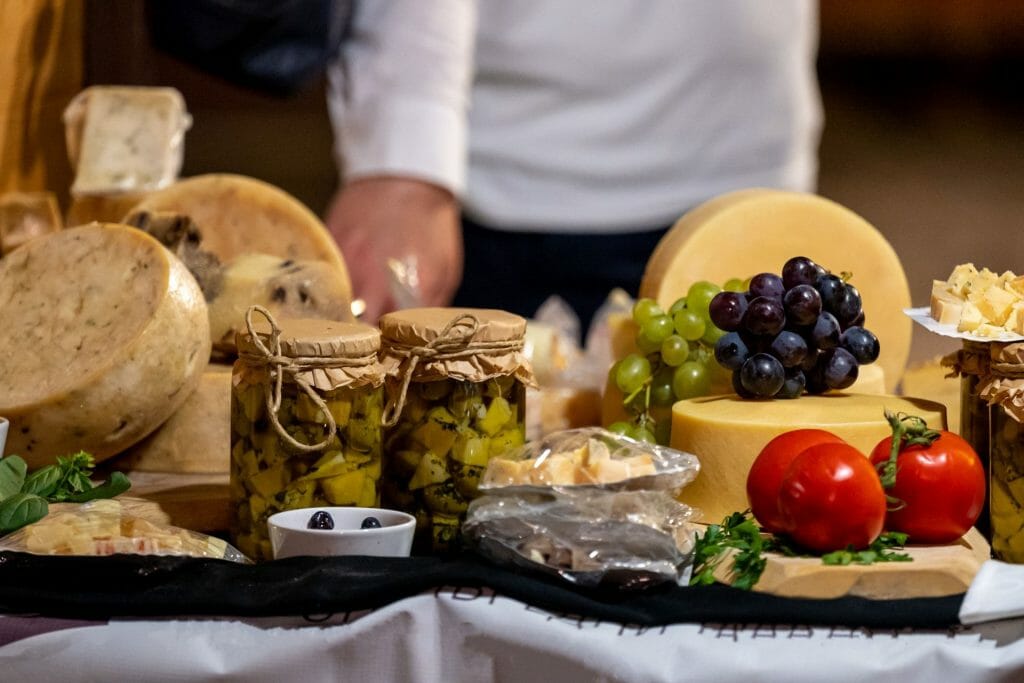
Frequently Asked Questions
What are must haves for a charcuterie board?
Must-haves for a charcuterie board include:
- Cured Meats: Such as prosciutto, salami, and chorizo.
- Cheeses: A mix of soft, hard, and aged cheeses.
- Breads and Crackers: Sliced baguette or artisanal crackers.
- Fruits: Grapes, figs, or sliced apples for a sweet contrast.
- Nuts: Almonds or walnuts add texture and flavor.
- Condiments: Include mustard, honey, and olives.
- Pickles: Gherkins or pickled onions for a tangy note.
- Presentation: A stylish board or platter for aesthetics.
- Utensils: Small knives for cutting and serving.
- Garnish: Fresh herbs like rosemary for a finishing touch.
Create a visually appealing and balanced board with these elements, and your charcuterie will be a hit.
Are charcuterie boards profitable?
Charcuterie boards can be profitable if marketed well. Profit margins depend on factors like pricing, ingredient costs, and demand. Catering events, selling online, or collaborating with local businesses can boost profitability. Maintain quality and unique offerings to attract customers and increase revenue.
How do you make a professional charcuterie board?
To make a professional charcuterie board:
- Start with a quality board or platter.
- Select a variety of cured meats and cheeses.
- Add fresh and dried fruits for contrast.
- Include nuts, olives, and pickles.
- Use small bowls for condiments.
- Arrange items aesthetically, balancing colors and textures.
- Garnish with fresh herbs.
- Serve with crusty bread or crackers.
Ensure a harmonious presentation and consider your audience's preferences.
What are 5 tips to making a charcuterie board?
Here are five tips for making a great charcuterie board:
- Balanced Variety: Include a mix of cured meats, cheeses, fruits, and accompaniments to create a balanced flavor profile.
- Quality Ingredients: Opt for high-quality meats and cheeses for a more delicious experience.
- Aesthetically Pleasing Presentation: Arrange items thoughtfully on the board to make it visually appealing.
- Pairing: Consider which items complement each other, like prosciutto with melon or brie with figs.
- Garnish: Add fresh herbs or edible flowers for a finishing touch that enhances the board's appeal.
Creating a charcuterie board is a blend of art and taste, so feel free to get creative and customize it to your preferences and the occasion.
Share Your Creations:
We’d love to see the charcuterie boards you create using our guide! Feel free to share your own creations in the comments or on social media, and tag us for a chance to be featured. And if you have any other ideas or tips for creating the perfect charcuterie board, we’d love to hear them.









